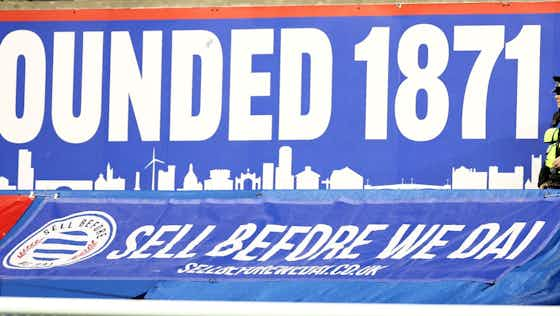Football League World
·4 October 2024
Reading FC issues will have AFC Wimbledon thankful they didn’t make big Plough Lane call: View

In partnership with
Yahoo sportsFootball League World
·4 October 2024

AFC Wimbledon faced a key decision in the move back to Plough Lane in 2019, and will be thankful they made the decision they did
Back in November 2019, AFC Wimbledon fans faced a tough decision concerning their move back home to Plough Lane.
Dons fans were faced with the fact that the club needed to raise £11m worth of funds to complete the project and bring football back to SW19.
This was an unprecedented amount, and the number left Wimbledon with a decision to make. Somehow, they raise the money needed themselves or accept outside investment into the club.
There was a resounding rejection to that second option, and with nearly four years now completed at the stadium, Dons fans can look back with pride at their decision during that testing time.

For a club that, at the time, was punching well above its weight, the figure of £11m was like receiving a dagger right through the heart. The money was an insurmountable amount, and without it, there were going to have to be compromises made when it came to the stadium.
The stadium was meant to be the hallowed return to football in the borough that bore the club's name, but if it could not be completed, how homely was it truly going to feel?
In a statement on the club website from back in 2019, it said that just some of the much-wanted features that would be affected were "income-generating conference and banqueting facilities, an additional 5000 covered seats through semi-permanent stands and a showpiece fans’ zone", and looking back now, most Wimbledon fans agree that without some of these features, Plough Lane would certainly not feel like home.
So, with a bridge to cross in order to continue with the project, the options were laid out plainly in front of all those that could vote on the matters. Does the club try and borrow as much as it can to help fund the project, but get stung when paying it back in years to come? Or do they just build what they can and call it there, bringing a damp end to what was once a promising upstart. Or, do the club do something they swore never to do when rising from the ashes back in 2002, and accept investment and potentially relinquish control of certain, if not all, parts of the club.
At that point in time too, Dons fans had already dug deep into their pockets when funding the Seedrs crowdfund, which raised £2m to help kickstart the stadium project, so it was expected that this bigger issue might have been just a step too far.
However, that could not have been further from the truth, with the fans quick to arrange a completely different alternative, raising the money through a bond issue, which was aptly named 'The Plough Lane Bond'. Through its two iterations, it raised £9m out of the £11m needed to fund the stadium's completion and further costs once the club were fully moved in and, to this day, the first bond, which raised £5.6m itself, is the largest football bond ever issued.
Through making history with The Plough Lane Bonds and raising the money needed themselves, the fans of Wimbledon stood, and should still stand, proud of the fact they never had to let go of their fan-ownership.
If they had done so, while nothing is guaranteed, years from now the club could have run into serious trouble like the likes of Reading experienced under Dai Yongge if they had begun to accept outside investment that could have turned into ownership and control.

While the Dons have similarly tumbled back down the leagues like the two aforementioned clubs have, with the side from SW19 going from League One to League Two after having moved into Plough Lane, things are now very much on the up. Over the past few months or so, some of the highest attendances recorded at the stadium have been set, and the club are also positioned well in the table, sitting just outside the play-offs with three games in hand.
And it is those figures above that have to make fans feel so thankful they decided upon the route they created themselves, which was not laid out in front of them, and ignored the lure of outside investment that would have wanted a large stake in the club.
While yes, Nick Robertson, a local businessman and co-founder of ASOS, did in fact contribute to the fund for the stadium, he did it out of his own pocket and expected nothing out of it, apart from wanting the club to do well.
So now, with almost four years done and dusted at the Cherry Red Records stadium, there is always going to be a question of "when will we get our rise" or "should we have given Jackson this time if he has failed to deliver" from many fans.
But with well-documented cases of owners completely destroying clubs from the inside out, and forcing them into relative obscurity, sacking managers, etc. there is no chance that, for the time now, the Dons Trust will be forced out of their fan-owned control, be expected to give up a large chunk of the control, or get rid of a manager who is overseeing a brilliant transformation at the moment.
Which is why, after what has been perhaps the most challenging week for a lot of Dons fans wanting to play Newcastle United at home in the Carabao Cup following the upset against Ipswich Town, that, no matter the situation, Wimbledon only need fan-ownership going forward, so that in a world dominated by 'oil money', the little guy is never forgotten and always taken seriously.






























































